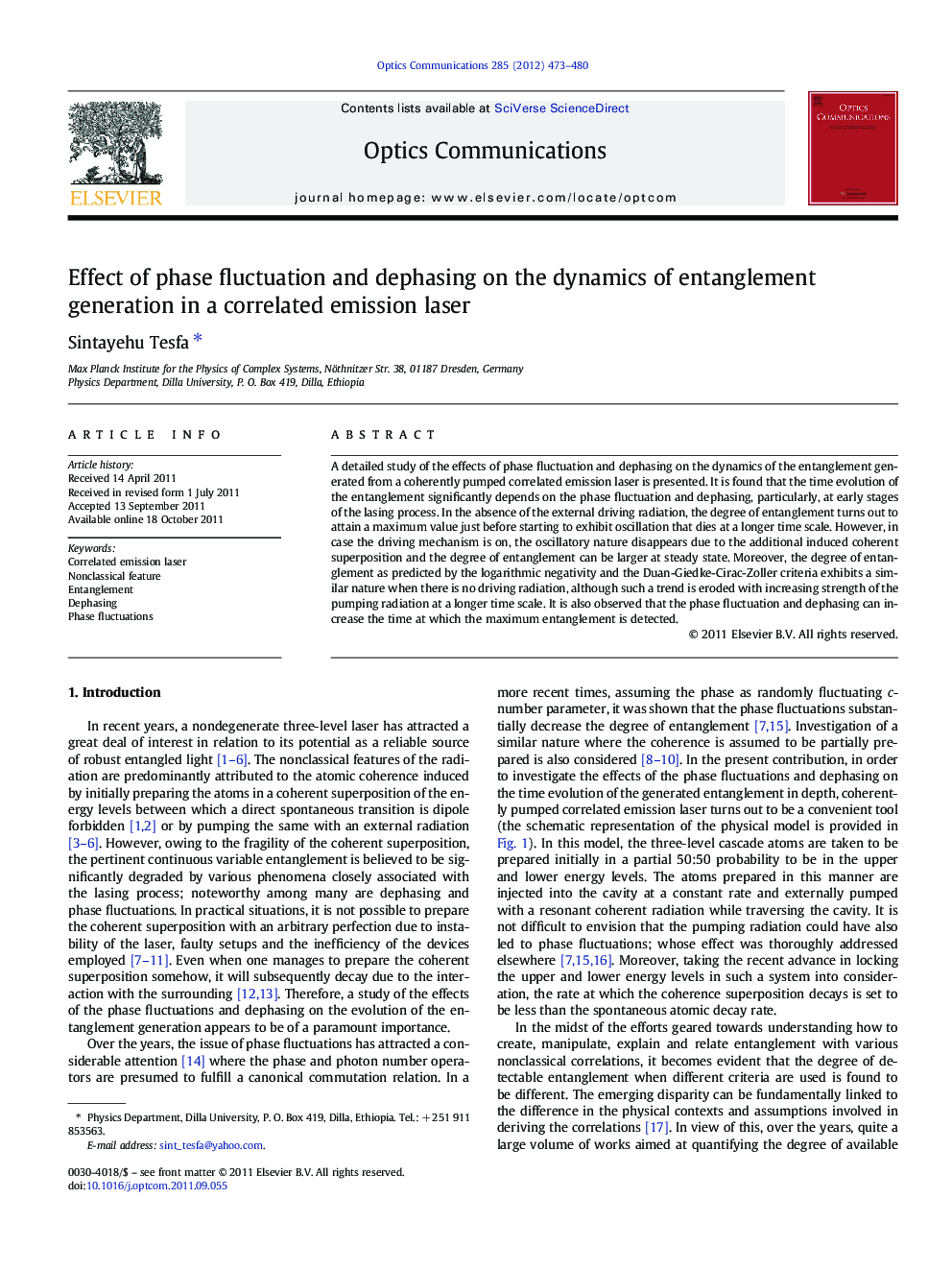| Article ID | Journal | Published Year | Pages | File Type |
|---|---|---|---|---|
| 1536676 | Optics Communications | 2012 | 8 Pages |
Abstract
A detailed study of the effects of phase fluctuation and dephasing on the dynamics of the entanglement generated from a coherently pumped correlated emission laser is presented. It is found that the time evolution of the entanglement significantly depends on the phase fluctuation and dephasing, particularly, at early stages of the lasing process. In the absence of the external driving radiation, the degree of entanglement turns out to attain a maximum value just before starting to exhibit oscillation that dies at a longer time scale. However, in case the driving mechanism is on, the oscillatory nature disappears due to the additional induced coherent superposition and the degree of entanglement can be larger at steady state. Moreover, the degree of entanglement as predicted by the logarithmic negativity and the Duan-Giedke-Cirac-Zoller criteria exhibits a similar nature when there is no driving radiation, although such a trend is eroded with increasing strength of the pumping radiation at a longer time scale. It is also observed that the phase fluctuation and dephasing can increase the time at which the maximum entanglement is detected.
Related Topics
Physical Sciences and Engineering
Materials Science
Electronic, Optical and Magnetic Materials
Authors
Sintayehu Tesfa,
